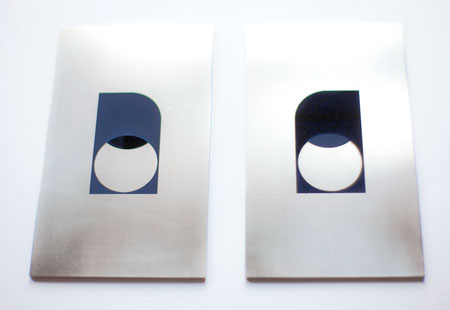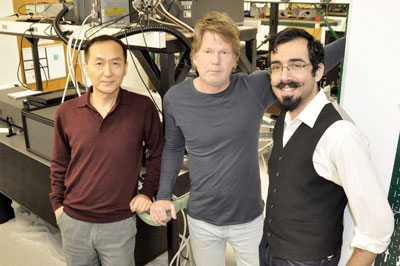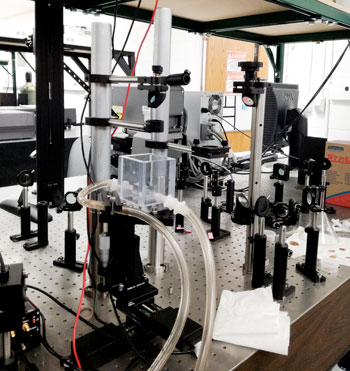| Nov 27, 2018 | |
New color technology can replace environmentally unfriendly paints and other coatings - also in art(Nanowerk News) Femtosecond laser surface nanostructuring is called the technique by which colors are made without dyes and pigments. |
|
| The color is not a paint or coating, but a part of the material itself. | |
 |
|
| Rubins J. Spaans – first artworks ever with angle-independent structural colors. (Image: Prof. Chunlei Guo) | |
| It is remarkable that these so-called structural colors are viewing angle-independent, that is to say non-iridescent. | |
| That means that the color is the same, regardless of how you rotate the material, and regardless of the angle between the light source and your eyes. | |
| Over the past two years, research scientist Professor Chunlei Guo, the inventor of the technology, and the Dutch artist Rubins J. Spaans have done research on optimizing the technique. | |
 |
|
| Prof. Chunlei Guo, Rubins J. Spaans and Erik Garcell in the lab in Rochester, NY. (Image: Prof. Chunlei Guo) | |
| Their goal was to create the purest colors ever including the blackest black and bluest blue, and apply the technique to larger surfaces. | |
| The results are now presented with the first two artworks ever made with viewing angle-independent structural colors. | |
| "This technique makes it possible to produce pure, saturated colors with a specific, narrow wavelength range, which is impossible with pigments and dyes. | |
| In theory, all colors are possible. A new step in painting," said Rubins. | |
| In Prof. Guo’s laboratory at the Institute of Optics at the University of Rochester (NY), blasts of laser light lasting a few millionth billionths of a second can turn the surface of the treated material any color. | |
| The ultra-short pulses cause atoms on the surface of the treated material to melt and vaporize, which then reassemble in nanostructures. | |
| Varying the length, strength and number of pulses, it is possible to control the configuration of the nanostructures, and hence control the reflected spectrum of light, the color. | |
 |
|
| Part of the femtosecond laser setup in lab Prof. Chunlei Guo. (Image: Rubins J. Spaans) | |
| Structural colors do not fade and are durable. The femtosecond laser technique is completely safe, non-toxic and fairly easy to apply. | |
| The technique has been developed to such an extent that it can be applied outside the laboratory environment. | |
| Short-term industrial application is feasible according to Prof. Guo and Rubins. They envision that cars with viewing angle-independent structural colors appear in the streets in the near future. |
| Source: Rubins J. Spaans | |
|
Subscribe to a free copy of one of our daily Nanowerk Newsletter Email Digests with a compilation of all of the day's news. |
